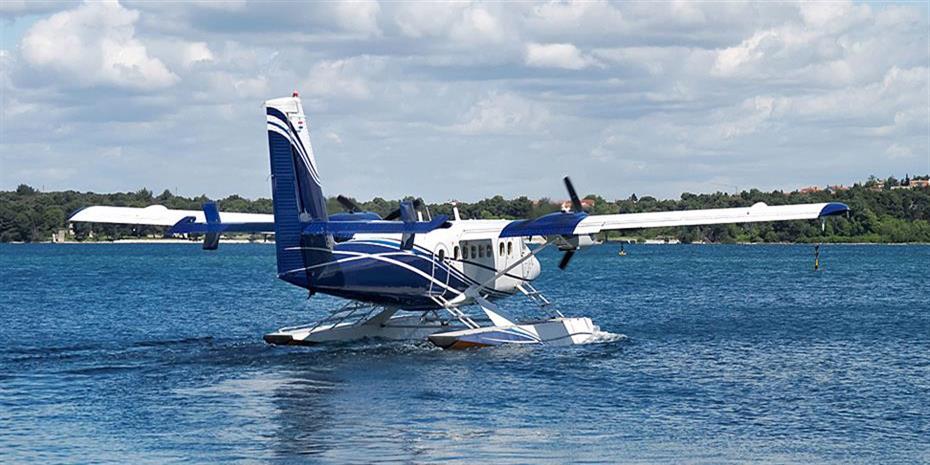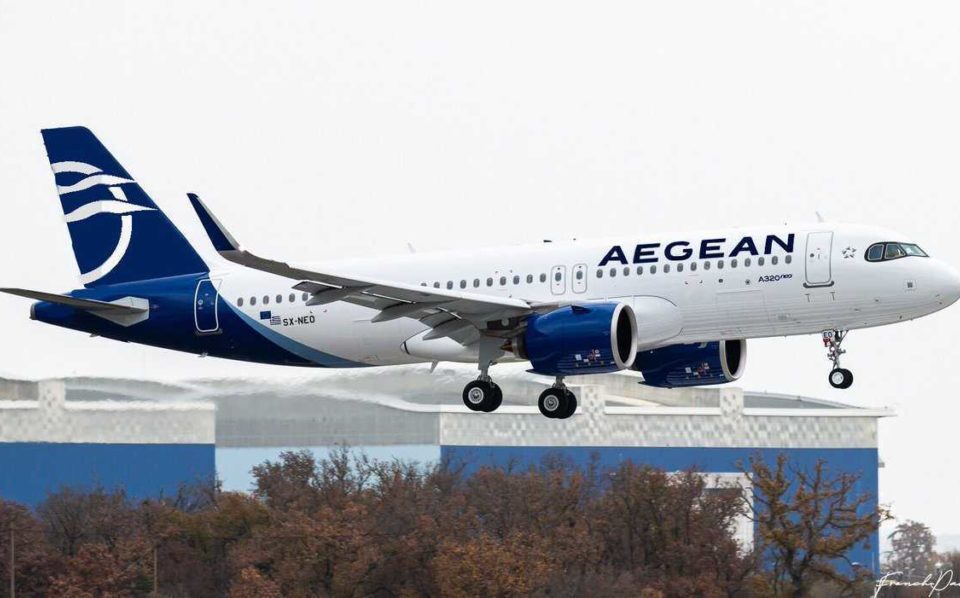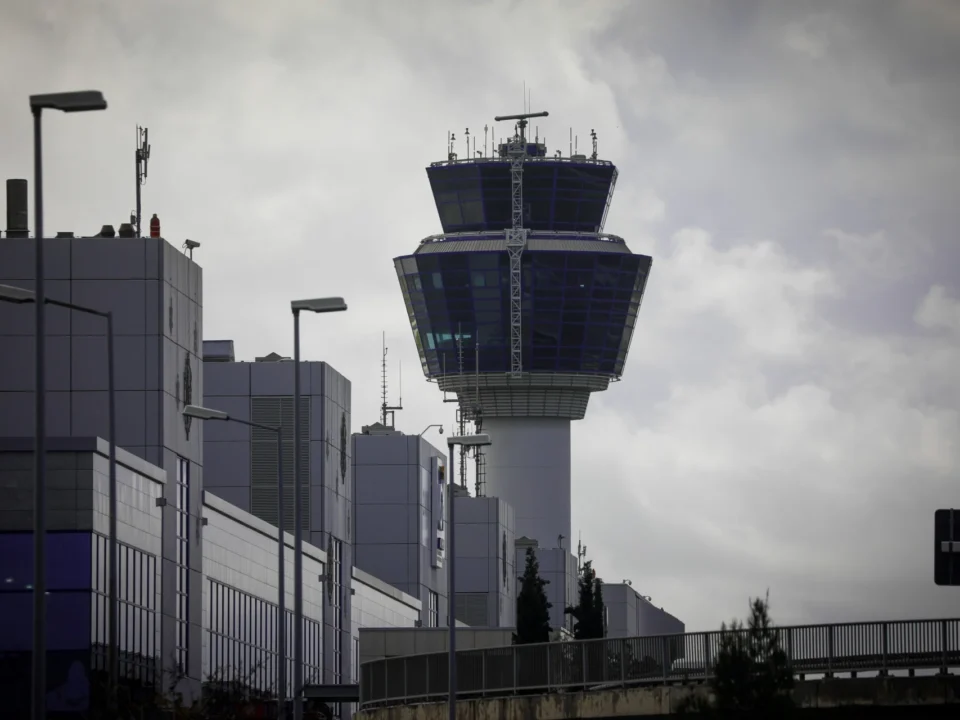At Malé Airport in the Maldives, travellers from every corner of the globe disembark from planes to the atoll capital of the exotic island nation. To get to one of the thousands of heavenly islands that are the final destination of their holiday, travellers simply transfer to one of the seaplanes waiting a few dozen metres away.
This exotic image may seem very distant for Greece, but it is not far from the future of travel (for us and tourists) to and from our beautiful islands. In a short time, apart from planes and barges, seaplanes will also be present, as well as private helicopters and small aircraft, which will change the way we travel to and from the islands with 700 scheduled connections throughout the year.
A fact which is evidenced not only by the high level of investment activity that is taking place, but also by the fact that one of the interested investors for seaplane routes to the islands is the airline giant Trans Maldivian, which operates seaplane services between the atolls and the Maldives.
So the day will come when we will be able to take a seaplane from the Alimos airport and in half an hour we will be on an Aegean island, for example Tinos, paying a ticket of 80-100 euros. Or, why not, in neighbouring Turkey!
Aegean like Maldives
The ambitious plan envisages the creation of waterports in 35 areas in every corner of the country, whether it involves islands with no other access than the coast, central areas like Attica, or even lakes like that of Ioannina.
Three companies, Hellenic Seaplanes, Grecian Air Seaplanes and Trans Maldivian, have expressed their participation in the project and have submitted dossiers to the competent authorities and are proceeding with their investments in waterways, while a fourth is in the exploratory phase. This is Merkur Air, which has already obtained the relevant permits from the competent authorities, has its first two seaplanes ready and is working on the Cesme-Mykonos air link.
The initial forecasts were for the first seaplane services from the capital to the Aegean islands to start at the beginning of May, but now there is a strong possibility that they may not even make it to this year’s high season. The reason is the water fields from which the seaplanes will operate and the -external- delays in their operation.
Thus, although some of the investors insist that they will make this summer season, the more pessimistic ones are postponing the start of the seaplane services until 2024. Waterways, however … do exist, albeit a few. There are only three licensed by the competent authorities, in Corfu, Paxos and Patras. Companies are currently building the rest in various parts of the country.
The waterways of Volos are also at an advanced stage of the licensing process (they will be completed by the end of the year).Ios, Rethymnon, Kalamata and Kyllini, as well as Patras. Approval has also been given to waterways in Kassandra, Halkidiki, Porto Heli, Ermioni and Lavrio, while the Ministry of Infrastructure, Transport and Networks has 23 other requests for waterway permits under consideration.
Of these, 18 of the files concern applications for establishment permits, while five others, those of Skyros, Skopelos, Patmos, Alonissos and Tinos, concern establishment and operating permits, as the facilities have been constructed. The waterways in Heraklion, Chania, Gazi and Platanias in Crete are currently under discussion.
The players and the changes
As the head of Hellenic Seaplanes Nicolas Charalambous explains to THEMA, the issue (given that this is a viable investment) is not the creation of a competitive means of transport for Greece. “We want to combine seaplane flights with existing transport solutions, so that there is a well-functioning overcrowded network. With the logic of transfers, life will be better not only for tourists but also for residents.”
Hellenic Seaplanes has an investment plan, according to Mr Charalambous, of €200 million for aviation and €50 million (covered by equity) for the waterways. “At the same time, we are creating the maintenance base in Chalkida on a 7-acre site and we are considering our central base in Alimos or, if conditions do not allow, in Volos, while we are creating a sales network that focuses on combining with other means of public transport.” The company plans to connect the islands to each other and the islands to a central destination in mainland Greece, with two flights a day to each destination.
“The Alimos – Tinos route takes 28 minutes, Tinos – Patmos 42 minutes, Tinos – Sifnos 22 minutes. We estimate the cost of the ticket at around 80 euros for every half hour of flight, if the seaplane leaves from a waterport, as there is the possibility to operate at conventional airports, such as “El. Venizelos with about 260 flights per year’.
The other major pillar of the seaplane project is Grecian Air Seaplanes and its (affiliated) Greek Waterways. The Head of Strategic Development of the two companies, Maria Toktor, has explained that “we come and seek to meet the needs of citizens, especially islanders, in their mobility, either between the islands, but also to connect the islands with the mainland”. On the investment side, the two companies are under the umbrella of an investment group of German and Swiss interests, with a project worth more than €180 million.
The investment plan foresees the creation of a network of more than 100 waterports throughout Greece. The company has currently fully licensed and operated waterports in Greece and is the operator of three waterports in Corfu, Paxos and Patras, and is leading an association of companies in the licensing of 40 more waterports.
The seaplane giant
As a third player in the project of waterports has recently been added the airline giant Trans Maldivian, which, according to information from “THEMATOS”, has expressed interest to participate in the routes connecting our islands. The company has asked to be informed about the available approach areas in order to submit a corresponding investment plan.
The company’s assets are not only its available capital, but also its previous experience, as it has been operating regular seaplane services to most of the 1 200 islands in the Maldives for more than a decade. In addition, it has a large fleet of seaplanes and qualified personnel (pilots, technicians and ground staff) at its disposal at any time.
What is taking them so long?
The good intentions are there, the money is there, but for more than ten years the seaplane programme has not progressed. Why? You would think that this would be a classic case of bureaucracy putting the brakes on projects, but it is anything but. The government has shown – with the involvement of ministers personally – that it has the intention of helping investors, and the regions have shown the same.
The plan to operate the waterports, in fact, coincided with the launch of the newly created Hellenic Civil Aviation Authority (HCAA), which, among other things, is tasked with facilitating procedures for aviation matters, but also with using European experience. HCAA, which is headed by Dr Christos Tsitouras, is composed of experienced aviation industry executives and is in constant contact with the relevant European agencies.
Well-informed sources in HCAA indicate that there is now the possibility of issuing the relevant licence even in a few weeks, if requested by a seaplane company. So why is the process taking so long? “The law and permits alone are not enough, even though there is support from the government,” says Charalambous. “We have more than ten years of being caught up in a rather unusual… Survivor of bureaucracy. In Alimos, for example, we were all set to prepare and operate a waterport, which would have been our base.
But the Land Registry intervened, which blocked the permit, as it identified arbitrary buildings with a demolition order in the area. In Tinos we got stuck with the Archaeological Service. In Sifnos, the fishermen’s association appealed in court and we are awaiting the decision of the Council of State. In Patmos we are waiting for the Ministry of Tourism. You understand that our plan is being blown up and so we are going for a new block with Volos, Skyros, Skopelos, Alonissos and Skiathos”.
The meltaemia
However, not everything is easy in a project as big as the interconnection with airplanes of the Greek islands and mainland. Experienced pilots explain to “THEMA” that there is an issue in the approach of seaplanes on days when it’s rainy, as the high waves can break the aircraft, as pilots say in their slang, i.e. cause serious damage to the aircraft.
To understand this, we only have to use the example of Tinos. On an annual basis, assuming that we have daily sailings to the island, on 120 days it will not be possible to approach the island because of high winds – and therefore waves.
There are two solutions to this, as explained by the same sources: the first is to manage the approaches by finding in real time an alternative approach point, based on an assessment of the weather conditions. This requires, of course, constant consultation between the services and companies and the crews. The second is the creation of waterways in sheltered places (e.g. in harbours, bays, etc.), which is not always feasible. Then, officials point out that from a business point of view there is always a risk.
Yes, the example of the Maldives is the one that everyone has in mind, with seaplanes becoming one of the dominant means of transport for locals, tourists and also goods, but there is also the example of Croatia. The Balkan country had hydroplane companies operating in the Balkan country until the previous years, but the routes were discontinued as the companies went bankrupt.
This was because the hourly flight costs were as high as EUR 6 000, due to the frequent damage to seaplanes caused by heavy use and bad weather conditions. In order to have a basis for comparison, suffice it to say that the companies that will operate in Greece, from the test flights they have carried out, conclude that an average flight cost will be around EUR 1 000-1 200 per hour. If the cost were to approach the Croatian cost, then the price of a ticket for a half-hour flight would soar from 80 to more than 500 euros.
Mykonos – Cesme
Merkur Air, which specializes in VIP transfers etc. with luxury jet airplanes and helicopters, has expressed its intention to participate in seaplane routes, even connecting the Greek islands with Turkish destinations, in order to take advantage of the double tourist dynamics. The company, which bears not only the name but also the head of the god Hermes on its wings, already has two seaplanes on standby and has plans to connect Mykonos with Cesme.
Merkur Air is also in talks to connect other Greek islands with cities in Asia Minor, creating a kind of “hop on – hop off” with seaplanes, so that one can quickly, easily and economically go from Turkey to one of the Greek islands and vice versa.
What are these seaplanes?
Seaplanes are nothing more than conventional passenger helicopter airplanes, which are equipped with special floats that allow them to land on bodies of water. As far as Greek companies are concerned, the main types designed to be used and tested are those used primarily in Europe. These are the Cessna Caravan and the Viking Twin Otter. The former are single-engined and have a carrying capacity of 12 people, with the advantage of versatility and wide use.
The second type are twin-engine aircraft, with a carrying capacity of 19 passengers and have the qualities of higher speed and larger size.
High income tourism
The boom that Greece has experienced in recent years in the tourism industry does not only translate into numbers, but also into quality. This is evidenced by the fact that there is a need for new, relatively unknown services in our country, such as VIP transport and hospitality.
This is precisely the area in which a number of start-ups and non-start-ups are betting, such as the mighty Aegean Executive, which has taken delivery of its first ultra-luxury aircraft, Merkur, which is running a programme to take delivery of ten jet aircraft, as well as companies with a greater focus on helicopters such as Superior Air (which has added another helicopter to its fleet) and many more.
In fact, demand is so high that industry professionals say it is impossible to meet it not so much in terms of available aircraft as in terms of approach sites. “There is work to be done, as the brand name Greece is proving to be powerful,” Merkur Air’s accounting manager Doulis Karafil tells THEMA and continues: “And there will continue to be work, but the issue of available slots will have to be solved.
More heliports need to be licensed and operated and more approach slots need to be found for private planes, especially in the summer season, when demand explodes and we have difficulty finding available slots in hot destinations such as Mykonos.”
The bad precedent
Seaplanes were a popular mode of transport in post-war Greece, as they were the most convenient and economical in a country with damaged infrastructure. Infrastructure rebuilding, however, and the falling cost of conventional air transport slowly forced seaplanes to disappear from Greek skies and Greek waters, however convenient they may have been. The next time we saw seaplane services in Greece was in 2005. The investor at that time was the Greek-Canadian of Kalymnos origin, Michalis Patelis, who founded AirSea Lines, which he even listed on the stock exchange, causing excitement among investors.
This enthusiasm was dashed in 2009, however, when the company announced that it was sinking into debt and was forced to suspend its flights. Since then, Greece has seen a seaplane again in the summer of 2013, when an aircraft coming from Brindisi landed in Corfu, inaugurating the maiden pilot flight of a European co-funded project to link Greece and Italy (by seaplane), which, as you can imagine, did not go ahead.
Ten years have passed, test flights have been made again by the investors, but regular services have not started. At least not yet…



